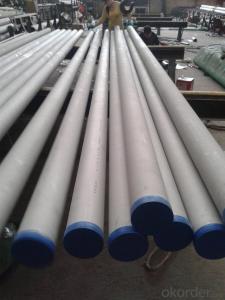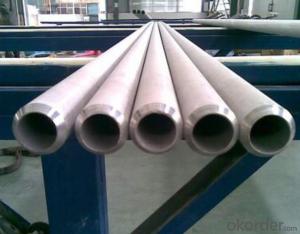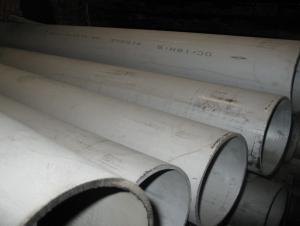Stainless Steel Seamless Steel Tube 304, 316 for Construction
- Loading Port:
- China main port
- Payment Terms:
- TT or LC
- Min Order Qty:
- 50 m.t.
- Supply Capability:
- 10000 m.t./month
OKorder Service Pledge
OKorder Financial Service
You Might Also Like
Product Description:
OKorder is offering Hot Rolled Low Carbon Steel Wire Rods for Nails, Steel Wire Mesh at great prices with worldwide shipping. Our supplier is a world-class manufacturer of steel, with our products utilized the world over. OKorder annually supplies products to African, South American and Asian markets. We provide quotations within 24 hours of receiving an inquiry and guarantee competitive prices.
Product Applications:
Hot Rolled Low Carbon Steel Wire Rods for Nails, Steel Wire Mesh are ideal for structural applications and are widely used in construction and manufacturing. Carbon steel wire rod is mainly used for reinforcement of reinforced concrete and welded structure or reprocessed (roberts , nail, etc.) materials, especially used to produce wire drawing, welding electrode, nails, spring, electronic, precise machinery parts and so on.
Product Advantages:
OKorder's Hot Rolled Low Carbon Steel Wire Rods for Nails, Steel Wire Mesh are durable, strong, and wide variety of sizes. They are newly produced by good quality steel billets.
Main Product Features:
· Premium quality
· Prompt delivery & seaworthy packing (30 days after receiving deposit)
· Can be recycled and reused
· Mill test certification
· Professional Service
· Competitive pricing
Product Specifications:
Steel Grade: SAE1006-1018B
Standard: ASTM, GB
Diameter: 5.5mm, 6.5mm, 7mm,8mm,9mm,10mm,12mm,14mm
Type: in coil, coil weight around 2MT
Alloy or Not: Alloy
Technique: Hot Rolled
Place of Origin: China Mainland
Surface: round, no twisted, light and smooth
FAQ:
Q1: Why buy Hot Rolled Low Carbon Steel Wire Rods for Nails, Steel Wire Mesh from OKorder.com?
A1: All products offered byOKorder.com are carefully selected from China's most reliable manufacturing enterprises. Through its ISO certifications, OKorder.com adheres to the highest standards and a commitment to supply chain safety and customer satisfaction.
Q2: How do we guarantee the quality of our products?
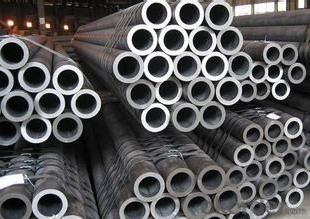
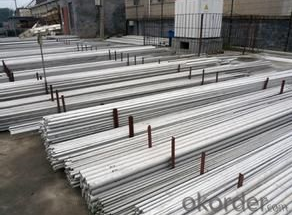
- Q:Can stainless steel pipes be used for heat exchangers?
- Indeed, heat exchangers can make use of stainless steel pipes. The reason behind the popularity of stainless steel for heat exchangers lies in its remarkable resistance to corrosion, ability to withstand high temperatures, and durability. Its capability to endure variations in pressure and temperature renders it appropriate for diverse heat exchange applications. Moreover, stainless steel pipes exhibit commendable thermal conductivity, enabling efficient heat transfer. Moreover, stainless steel proves to be a dependable and long-lasting choice for heat exchangers in numerous industries like chemical, pharmaceutical, food processing, and HVAC, owing to its ease of cleaning and maintenance.
- Q:Can stainless steel pipes be painted or coated?
- Yes, stainless steel pipes can be painted or coated. However, it is essential to choose the appropriate paint or coating that is specifically designed for stainless steel to ensure proper adhesion and long-term durability. Additionally, the surface of the stainless steel pipes should be thoroughly cleaned and prepared before applying any paint or coating.
- Q:Disadvantages of stainless steel tubes
- Aluminum plastic composite pipe is a kind of pipe material that is more popular at present. Because of its light weight, durability and convenient construction, it is more suitable to be used in home decoration. The main drawback is that when used as a hot water pipe, due to long-term thermal expansion and cold contraction, it will cause the wall of the pipe to be dislocated so as to cause leakage.
- Q:Can stainless steel pipes be used for natural gas systems?
- Indeed, natural gas systems can utilize stainless steel pipes. Given its exceptional resistance to corrosion and ability to withstand elevated pressure and temperature levels, stainless steel emerges as a fitting material for the transportation of natural gas. Additionally, the flawlessly smooth inner surface of stainless steel pipes facilitates efficient gas flow, thereby reducing the likelihood of blockages or obstructions. Nevertheless, it remains crucial to guarantee that the stainless steel pipes employed adhere to the precise standards and codes mandated for natural gas systems, in order to ensure both safety and compliance.
- Q:Can stainless steel pipes be used for drinking water systems?
- Yes, stainless steel pipes can be used for drinking water systems. Stainless steel is a safe and hygienic material that is resistant to corrosion, rust, and scaling. It does not release harmful substances into the water and is approved by regulatory bodies for use in drinking water applications.
- Q:What is the difference between stainless steel pipes and carbon steel pipes?
- The main difference between stainless steel pipes and carbon steel pipes lies in their composition. Stainless steel pipes contain a higher percentage of chromium, which provides excellent resistance to corrosion and oxidation. On the other hand, carbon steel pipes have a higher carbon content, making them stronger and more durable. Stainless steel pipes are commonly used in applications where corrosion resistance is crucial, such as in the food and chemical industries, while carbon steel pipes are often used for high-pressure and high-temperature applications, such as in oil and gas pipelines.
- Q:Are stainless steel pipes suitable for solar power systems?
- Stainless steel pipes prove themselves as a suitable option for solar power systems. Their exceptional resistance to corrosion, a renowned characteristic of stainless steel, renders them an optimal choice for solar power systems that encounter diverse weather conditions. The transportation of fluids, such as water or heat transfer fluids, often arises as a necessity in solar power systems, and stainless steel pipes effectively cater to these requirements. Additionally, the durability and prolonged lifespan of stainless steel pipes ensure the longevity and efficiency of the solar power system. Moreover, stainless steel, being a sustainable and environmentally friendly material, harmonizes well with the renewable energy objectives of solar power systems. In conclusion, stainless steel pipes emerge as a dependable and appropriate selection for solar power systems.
- Q:How is stainless steel pipe different from carbon steel pipe?
- Stainless steel pipe and carbon steel pipe are two popular materials used in various industries for different applications. The main difference between these two types of pipes lies in their composition, corrosion resistance, and price. Firstly, stainless steel pipe is made up of an alloy of iron with a minimum of 10.5% chromium content. This addition of chromium forms a protective layer of chromium oxide on the surface of the pipe, which significantly enhances its corrosion resistance. On the other hand, carbon steel pipe is primarily composed of iron and carbon, with no additional alloying elements. This lack of alloying elements makes carbon steel pipe more susceptible to corrosion, especially when exposed to moisture or harsh environments. Secondly, stainless steel pipe is highly resistant to corrosion and rust, making it suitable for applications where the pipe needs to withstand harsh conditions or exposure to corrosive substances. Carbon steel pipe, on the other hand, is more prone to corrosion and may require additional protective coatings or treatments to prevent rusting. Lastly, the price of stainless steel pipe is generally higher than that of carbon steel pipe. This is mainly due to the added chromium content and the superior corrosion resistance it provides. Carbon steel pipe, being a more basic and common material, is generally more affordable and widely available. In summary, the key differences between stainless steel pipe and carbon steel pipe lie in their composition, corrosion resistance, and price. Stainless steel pipe offers superior corrosion resistance and durability, making it ideal for applications where corrosion is a concern. Carbon steel pipe, although less resistant to corrosion, is more affordable and widely used in various industries. The choice between these two types of pipes ultimately depends on the specific requirements, budget, and environmental conditions of the intended application.
- Q:Can stainless steel pipes be used for power plants?
- Yes, stainless steel pipes can be used for power plants. Stainless steel offers excellent corrosion resistance and high-temperature strength, making it suitable for various applications in power plants, including carrying fluids and gases, heat exchangers, and steam distribution systems.
- Q:What is the difference between seamless and EFW stainless steel pipes?
- Seamless stainless steel pipes are manufactured through a process where a solid billet is heated and pierced to form a hollow tube without any seams or joints. On the other hand, EFW (Electric Fusion Welded) stainless steel pipes are made by welding the edges of a stainless steel plate or strip to form a tubular shape. The main difference lies in the manufacturing process, with seamless pipes having a higher strength and more uniform structure compared to EFW pipes. Seamless pipes are commonly used in industries requiring high pressure and temperature applications, while EFW pipes are suitable for general-purpose applications.
1. Manufacturer Overview |
|
|---|---|
| Location | |
| Year Established | |
| Annual Output Value | |
| Main Markets | |
| Company Certifications | |
2. Manufacturer Certificates |
|
|---|---|
| a) Certification Name | |
| Range | |
| Reference | |
| Validity Period | |
3. Manufacturer Capability |
|
|---|---|
| a)Trade Capacity | |
| Nearest Port | |
| Export Percentage | |
| No.of Employees in Trade Department | |
| Language Spoken: | |
| b)Factory Information | |
| Factory Size: | |
| No. of Production Lines | |
| Contract Manufacturing | |
| Product Price Range | |
Send your message to us
Stainless Steel Seamless Steel Tube 304, 316 for Construction
- Loading Port:
- China main port
- Payment Terms:
- TT or LC
- Min Order Qty:
- 50 m.t.
- Supply Capability:
- 10000 m.t./month
OKorder Service Pledge
OKorder Financial Service
Similar products
New products
Hot products
Hot Searches
Related keywords

